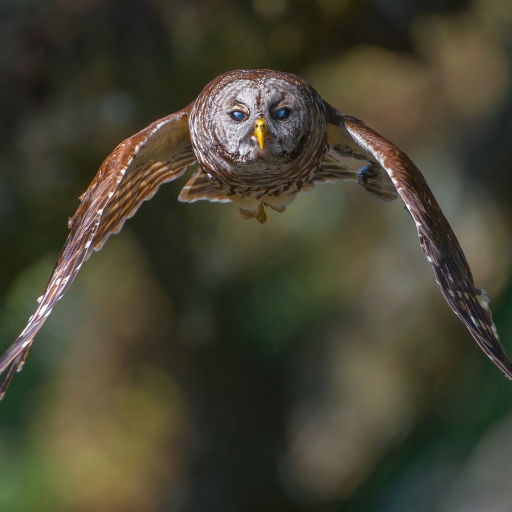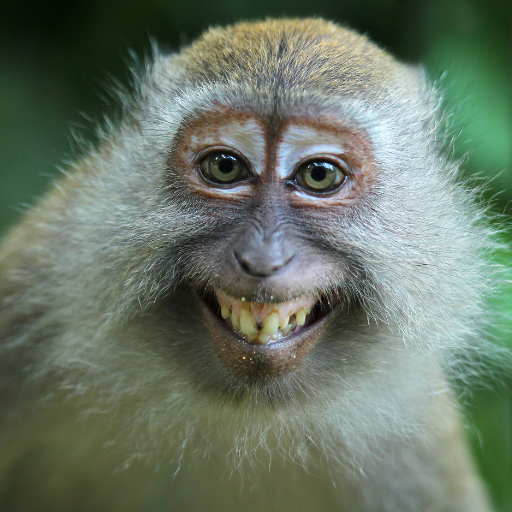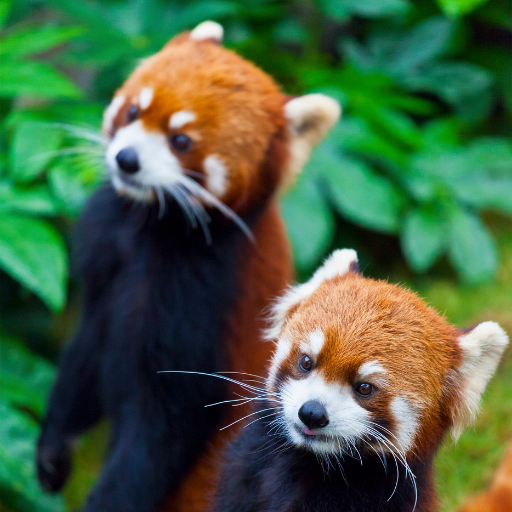Why Do Nocturnal Animals Thrive at Night? Discover Nocturnal Mysteries
Have you ever wondered why some animals seem to come alive when the sun sets? From owls silently swooping through the night sky to foxes sneaking through moonlit forests, nocturnal creatures possess a special magic that often eludes the daylight-dwelling world. But have you ever stopped to ask, “Why do animals thrive at night?” In this article, we’ll explore the fascinating mysteries of nocturnal life and how animals have adapted to life in the dark. So, grab a flashlight and let’s uncover the secrets behind these creatures’ midnight adventures!
Table of Contents
What Makes an Animal Nocturnal?
Nocturnal animals are those that are active during the night and rest during the day. But what makes an animal nocturnal in the first place? The reasons are as varied as the creatures themselves, but most often it comes down to survival. For some, the cover of darkness offers protection from predators, while for others, it provides a quieter, less competitive environment to find food.
Think of it like this: just as a night owl prefers the silence of a moonlit night, many animals have evolved to thrive under the cloak of darkness for similar reasons.
The Benefits of Nighttime Hunting
For animals like owls, bats, and big cats, the night is the perfect time to hunt. The absence of light creates a peaceful atmosphere, where they can use their specialized senses to track down prey without being seen. Some nocturnal predators, like the African lion, rely on the cover of night to surprise their prey, which would likely spot them during the day.
By hunting at night, these animals avoid the intense competition for food that happens during the day, when many other predators are out and about. It’s an evolutionary advantage that lets them remain at the top of the food chain.
How Night Vision Works in Animals
Have you ever wondered how some animals seem to navigate in pitch-black darkness? The secret lies in their specialized eyes. Nocturnal animals typically have a higher number of rod cells in their retinas, which are responsible for detecting light. Rod cells are much more sensitive to light than cone cells, which allow for color vision.
This means nocturnal creatures can see better in low-light conditions, giving them an edge when hunting or avoiding danger. For example, a cat’s eyes can reflect light like mirrors, which is why their eyes seem to “glow” in the dark. This adaptation allows them to see in near-total darkness.
Predator vs. Prey: The Role of Darkness
Not all nocturnal animals are predators. In fact, many prey animals also thrive in the dark to avoid being seen by predators. Take the deer, for example. These animals are most active at dawn and dusk, a time when their eyesight is better suited for detecting threats in low light. Darkness, therefore, gives both predator and prey a unique opportunity to thrive.
In nature, the night is a constant game of cat and mouse, where the stakes are high and the rules are constantly shifting. Darkness becomes a battlefield where survival is determined by who can see better, move more quietly, or outsmart the other.
The Importance of Temperature Regulation
The night is cooler than the day, which offers nocturnal animals a break from the sun’s scorching heat. This makes nighttime ideal for animals living in hot climates, such as deserts or savannas. By being active at night, they avoid the extreme daytime temperatures and conserve energy.
For instance, the fennec fox, native to the Sahara Desert, has large ears that help dissipate heat. By staying active at night, it can regulate its body temperature while foraging for food, often avoiding the searing heat of the daytime sun.
The Mystery of Nocturnal Migration
Some animals don’t just roam around at night—they migrate. This is especially true for certain species of birds. For example, many migratory birds travel at night to avoid predators, minimize energy expenditure, and take advantage of cooler temperatures. Their sense of time and navigation abilities are so advanced that they can accurately travel thousands of miles under the cover of darkness.
This nocturnal migration is essential for survival, allowing these birds to cover long distances without exposing themselves to the dangers of daytime predators.
How Do Nocturnal Animals Use Sound?
While many nocturnal animals rely on enhanced vision, others depend on sound to survive. Bats, for example, use echolocation to “see” in the dark. By emitting high-pitched sounds and listening for the echoes that bounce back, they can create a mental map of their surroundings, allowing them to catch insects mid-flight.
This sophisticated method of navigation and hunting in the dark shows just how well adapted some animals are to nighttime life. Similarly, animals like owls use their acute hearing to track the movements of prey, even when it’s hidden from sight.
What Animals Are Most Active at Night?
While many animals are nocturnal, some species stand out for their remarkable ability to thrive after sunset. These include:
- Owls: Masters of the night, with incredible vision and hearing to hunt small mammals and birds.
- Bats: Nocturnal mammals that use echolocation to navigate and find food.
- Foxes: Often most active during twilight and the early hours of night, hunting for small mammals.
- Raccoons: Known for their dexterity and adaptability, raccoons are scavengers that thrive in the dark.
The Role of Nocturnal Adaptations in Survival
In addition to physical adaptations like enhanced vision or echolocation, nocturnal animals often develop unique behaviors to help them survive. For example, some animals have evolved specialized ways to communicate in the dark, using sounds, scents, or even bioluminescence to attract mates or ward off predators.
These adaptations are crucial for survival, as they help nocturnal animals navigate the challenges of the night. Without these abilities, they would be far less effective in the darkness that defines their world.
The Evolution of Nightlife in Animals
The evolution of nocturnal behavior is a fascinating example of how animals adapt to their environment. Over millions of years, animals have developed traits that allow them to take advantage of the unique opportunities presented by the night. From specialized senses to new methods of hunting and migration, nocturnal animals continue to evolve in ways that are both mysterious and awe-inspiring.
How Human Activity Affects Nocturnal Animals
While nocturnal animals have evolved to thrive in the dark, human activity can disrupt their natural behaviors. Light pollution, for example, can interfere with the migration patterns of birds, while artificial lighting can cause disorientation in animals that rely on darkness for navigation.
Noise pollution is another factor that affects nocturnal animals, disturbing their communication and hunting behaviors. The more we encroach on the natural world, the more we disrupt the delicate balance that nocturnal animals depend on.
The Fascinating World of Bioluminescence
Some nocturnal creatures go a step further, using bioluminescence to light up the darkness. From fireflies to deep-sea fish, bioluminescence serves as a means of communication, attraction, and even defense. This glowing phenomenon is another amazing way that animals have adapted to life in the dark.
What Are the Risks of Being Active at Night?
While being active at night offers many benefits, it also comes with risks. Nocturnal animals must constantly be vigilant against predators, as they are often more vulnerable when visibility is limited. Additionally, the competition for food and mates is often intense in the darkness, making survival a constant challenge.
Can Animals Tell Time?
Yes, many animals have an internal clock, known as a circadian rhythm, that tells them when to sleep, hunt, and mate. For nocturnal animals, their circadian rhythm is tuned to the dark hours, helping them maintain a healthy balance between activity and rest. This internal timekeeping system ensures that they are active at the optimal times for survival.
Nocturnal Habitats Around the World
From the deep forests of the Amazon to the vast deserts of Africa, nocturnal animals thrive in a wide range of habitats. Each environment presents unique challenges, but the darkness provides these creatures with the tools they need to survive. Whether they are living in the dense jungles of Southeast Asia or the frozen tundra of the Arctic, nocturnal animals have adapted to the specific demands of their environment.
Conclusion
The night is a time of mystery and magic, filled with creatures that have evolved to thrive when the world goes dark. From their enhanced senses to their unique behaviors, nocturnal animals offer us a glimpse into the wonders of the animal kingdom. By exploring how and why animals thrive at night, we’ve uncovered the extraordinary adaptations that make the darkness a playground for survival and success.
FAQs
- Why do animals prefer the night for hunting? Animals prefer hunting at night because the darkness provides them with better cover, allowing them to avoid predators and stealthily approach their prey.
- How do nocturnal animals see in the dark? Nocturnal animals have specialized eyes with more rod cells, allowing them to see better in low-light conditions compared to humans.
- Do all nocturnal animals use echolocation? No, not all nocturnal animals use echolocation, but species like bats and certain marine animals rely on it to navigate and hunt.
- What are some examples of nocturnal animals? Examples include owls, bats, foxes, raccoons, and some species of rodents, all of which are adapted to life in the dark.
- How does human activity affect nocturnal animals? Urbanization, artificial lighting, and noise pollution can disrupt the natural behavior of nocturnal animals, causing disorientation and reducing their chances of survival.
Nocturnal Animals, Their Adaptations, and Survival Mechanisms:
- Smithsonian – Why Do Animals Sleep at Night?
An insightful article on why many animals have adapted to nocturnal lifestyles and how they navigate in the dark.
https://www.smithsonianmag.com/science-nature/why-do-animals-sleep-at-night-164285415/ - BBC Earth – The Secrets of Nocturnal Life
A deeper look into the world of nocturnal life and the incredible adaptations of animals that thrive in the dark.
https://www.bbcearth.com/blogs/nocturnal-animals - World Wildlife Fund (WWF) – Nocturnal Animals: How They Survive the Dark
A resource on how nocturnal animals adapt to survive and hunt at night, from enhanced senses to unique behaviors.
https://www.worldwildlife.org/pages/nocturnal-animals-how-they-survive-the-dark - Scientific American – Why Some Animals Are Nocturnal
An explanation of the evolutionary advantages of nocturnal behavior, including predator avoidance and temperature regulation.
https://www.scientificamerican.com/article/why-are-some-animals-nocturnal/



